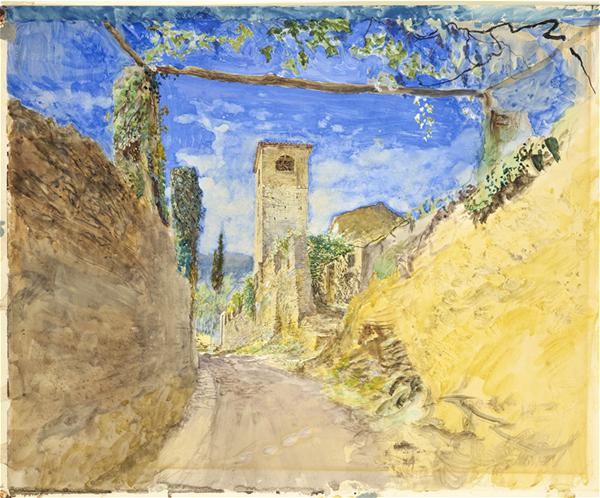 |
| A self portrait by Ruskin |
At the National Gallery of Canada they're currently exhibiting a collection of art by
John Ruskin (1819-1900), most of it on loan from the
Ashmolean Museum in Oxford.
The exhibition is called "Artist and Observer." Ruskin was sensitive to the point of insanity. On his wedding night in 1848, his observations (
or whatever) shocked him out to such an extent that the marriage was never consummated and was eventually, in 1854, annulled. In the end his wife
Effie married
Millais instead, a story that reminds me of Dorothea, Casaubon and Will Ladislaw in George Eliot's
Middlemarch. It is alleged that Ruskin was also in love with a very young Irish girl called
Rose La Touche, whose death devasted him.
 |
| Study of Gneiss Rock |
Despite the tension with Millais, Ruskin was an apologist for the
Pre-Raphaelites. He greatly admired
Turner, too.
People tried to chivvy Ruskin into being normal. As a youth, his father had insisted on his mastering the art of drawing, because that's what young gentlemen did. As they toured Europe together, Ruskin drew every place he visited, cathedrals, bridges, streets. His technique improved rapidly and his sketches of architectural detail––cornices, arches, capitals, the painted details––were as exact as photographs. He was interested in
daguerrotypes too. Eventually he chose natural subjects, too: studying
the appearance of rocks and trees in great detail, fruit and flowers, or a bird's feather. His sketches are similar to
Dürer's in their meticulousness and intensity.
 |
| Vineyard Walk, Lucca, 1874 |
Drawing and the natural world helped him through his depressions. A friend advised him to work on self-portraits when he was feeling miserable, but the results were predictably gloomy. What seems to have helped him better were his stays in the Alps, in Switzerland or Chamonix, France. He loved Italy too. The landscapes in the Ottawa exhibition are so attractive!––little sketches of Luzern, Fribourg, Venice, Pisa, Verona, of the wilder parts of northern Britain too. Mountain peaks and glaciers appealed to his romantic sensibilities and he obviously felt more at home out of doors than indoors. Mostly he drew in pencil (graphite) with some touches of black ink or white paint, but all of a sudden I came across one little painting in full colour, his picture of a vineyard at Lucca under a bright, blue sky. That must have been done on one of his good days.




No comments:
Post a Comment